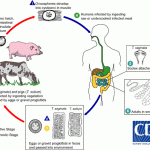
Sometimes antibiotics are the only line of defense you have against bacterial infection. They work by either killing the infection-causing bacteria or preventing them from reproducing, depending on the antibiotic’s class. Medical professionals will often recommend incorporating a probiotic diet, supplements, or both in your antibiotic regimen. Let’s see why.









